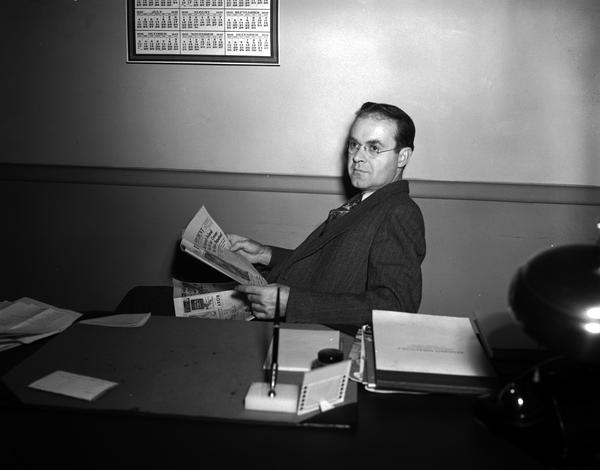Awards
- National Academies - 1942
- American Association for the Advancement of Science

William David Thornbury was born in English, Indiana, April 23, 1900, the son of Frank Anderson and Belle (Flanary) Thornbury. He attended primary and secondary schools in English, graduating from high school in 1918. In the fall of that year he enrolled at Central Normal College in Danville, Indiana, and attended for a year to become a high school teacher. The next fall, 1919, he taught history, Latin, and algebra at Alton High School; the following year, 1920, he moved to Marengo High School, where he was assistant principal and taught history and Latin. He remained at Marengo until the fall of 1922, when he enrolled at Indiana University to study geology.
He graduated from IU in 1925 with a B.A. in geology and was elected to membership in Phi Beta Kappa. He was a member of the Acacia social fraternity and Sigma Gamma Epsilon, the geology honorary society. The summer after graduation, he went west and taught history in the high school at Cripple Creek, Colorado, a famous gold mining town. A year later, he enrolled in graduate school at the University of Colorado, where he was a graduate assistant teaching geomorphology and climatology. He received the M.A. degree in geology in 1928. He received his Ph.D. from Indiana University in 1936 and remained on the faculty. In 1946, separate departments of geology and geography were established, and Bill chose to go with geology; he was proficient in both subjects, had taught both geography and geology courses over the years from 1928 through 1945, and had published articles in both fields. From 1939 to 1952, Bill served on the Athletics Committee and during the war years from 1942 through 1945 he was Assistant Dean of Men.
Bill Thornbury was one of the leading geomorphologists in the country and gained international recognition for his outstanding textbook on geomorphology. He wrote a second textbook, published in 1965, entitled, Regional Geomorphology of the United States, which also was well received and was adopted as a text in many universities throughout the United States, particularly for graduate courses in geology. In addition to his textbooks, Bill Thornbury published articles in the areas of Pleistocene glaciation, particularly of Indiana and the upper Midwest. He worked as a groundwater geologist for the U.S. Geological Survey in the summer of 1946, concentrating on water supply potential in northern Indiana. He also worked in the summers from 1947 through 1951 for the Indiana Geological Survey; from this work came two survey publications describing the geology of Miami County and Wabash County in north central Indiana.
Bill was a fellow of the Geological Society of America and was chairman of the Glacial Geology Division of the Society in 1967-68. He was also a member of the Free and Accepted Masonry, the American Association for the Advancement of Science, the American Meteorological Society, and Sigma Xi; he was an active participant in the Indiana Academy of Science. In 1986, he received the Richard Owen Award, given by the Indiana University Department of Geology to a distinguished alumni in recognition of outstanding contributions to the geological sciences and meritorious service to the profession. Professor Thornbury passed away on November 12, 1986.